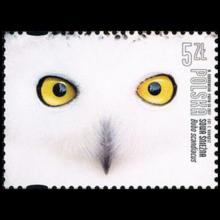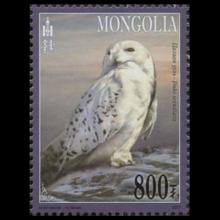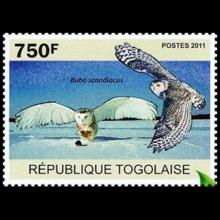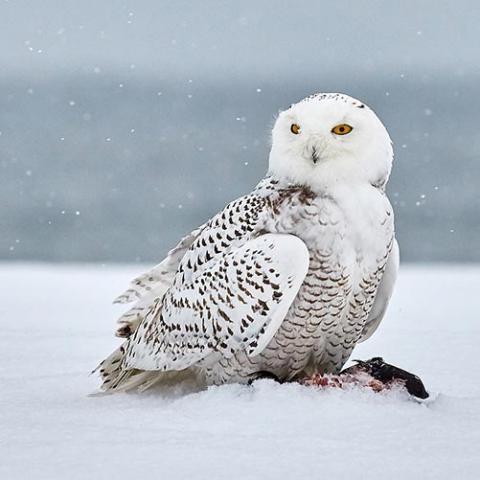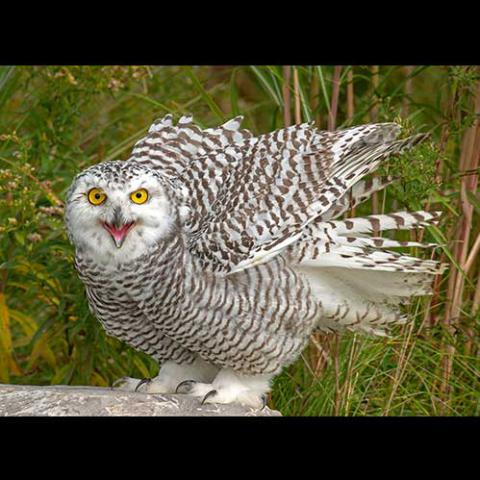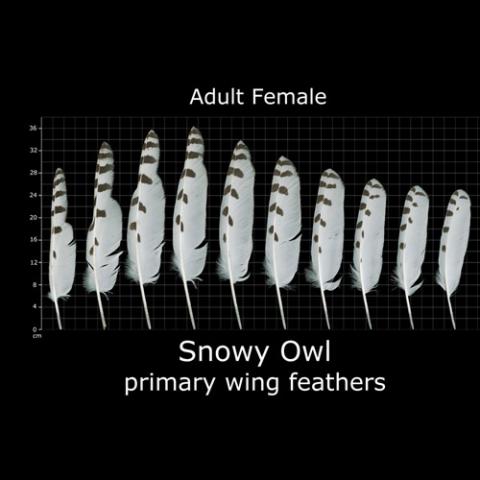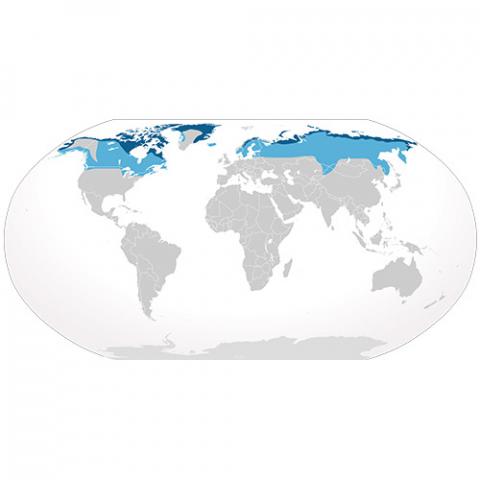NAMES
TAXONOMY
Poland
Issued:
Stamp:
Bubo scandiacus
Mongolia
Issued:
Stamp:
Bubo scandiacus
Togo
Issued:
Stamp:
Bubo scandiacus
Poland
Issued:
Stamp:
Bubo scandiacus
Mongolia
Issued:
Stamp:
Bubo scandiacus
Togo
Issued:
Stamp:
Bubo scandiacus
Poland
Issued:
Stamp:
Bubo scandiacus
Mongolia
Issued:
Stamp:
Bubo scandiacus
Togo
Issued:
Stamp:
Bubo scandiacus
There’s A Snowy Owl in Central Park for the First Time in Over a Century
By Willy Blackmore January 27, 2021
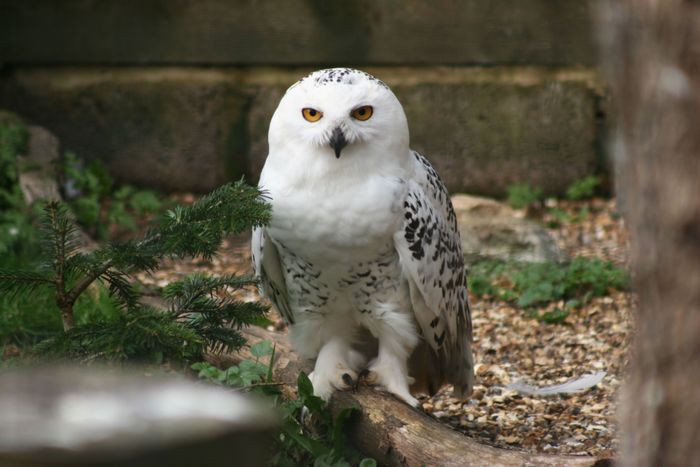
Yes, 2020 was terrible for most things, but it was a banner year for the order Strigiformes in New York City. And now 2021 is already outclassing it: A snowy owl was spotted today in Central Park for the first time since 1890. Normally Arctic residents, some of the stark-white owls, which can have a wingspan of up to five feet, move farther south during the winter, supplementing their usual diet of lemmings with mice and other rodents, which we have in abundance. New York State is at the southern end of the species’s winter range. They’re a relatively common sight upstate and even in wilder stretches of southern New York, like the dunes at Jones Beach and even Randalls and Liberty islands; a few years ago one showed up in a courtyard of the city jail on Rikers Island. But today’s appearance in the park is an extreme rarity.
Unlike the tiny saw-whet, drab-colored barred, or even uniquely tufted the long-ear owl, a snowy owl is far easier to spot — especially when there’s no snow on the ground. The bird that’s in the park today was spotted near the North Meadow, hanging around the ballfields with an American crow. The city’s growing birding community have dropped everything and rushed to the park; Urban Park Rangers are on the scene to help control crowds and keep people at a distance.
Reference: www.curbed.com
Link (in a new tab) to recordings of: Bubo scandiacus (Snowy owl) at https://xeno-canto.org
Genus species (Animalia): Bubo scandiacus
The snowy owl (Bubo scandiacus) is a large, white owl of the true owl family. It is sometimes also referred to, more infrequently, as the polar owl, the white owl and the Arctic owl. Snowy owls are native to the Arctic regions of both North America and the Palearctic, breeding mostly on the tundra. It has a number of unique adaptations to its habitat and lifestyle, which are quite distinct from other extant owls. One of the largest species of owl, it is the only owl with largely white plumage. Males tend to be a purer white overall while females tend to more have more extensive flecks of dark brown. Juvenile male snowy owls have dark markings that may appear similar to females until maturity, at which point they typically turn whiter. The composition of brown markings about the wing, although not foolproof, is the most reliable technique to age and sex individual snowy owls.
Most owls sleep during the day and hunt at night, but the snowy owl is often active during the day, especially in the summertime. The snowy owl is both a specialized and generalist hunter. Its breeding efforts and entirely global population are closely tied to the availability of tundra-dwelling lemmings but in the non-breeding season and occasionally during breeding the snowy owl can adapt to almost any available prey, most often other small mammals and northerly water birds (as well as, opportunistically, carrion). Snowy owls typically nest on a small rise on the ground of the tundra. The snowy owl lays a very large clutch of eggs, often from about 5 to 11, with the laying and hatching of eggs considerably staggered. Despite the short Arctic summer, the development of the young takes a relatively long time and independence is sought in autumn.
The snowy owl is a nomadic bird, rarely breeding at the same locations or with the same mates on an annual basis and often not breeding at all if prey is unavailable. A largely migratory bird, snowy owls often wandering almost anywhere close to the Arctic sometimes unpredictably irrupting to the south in large numbers. Given the difficulty of surveying such an unpredictable bird, there was little in depth knowledge historically about the snowy owl's status. However, recent data suggests the species is declining precipitously. Whereas the global population was once estimate at over 200,000 individuals, recent data suggests that there are probably fewer than 100,000 individuals globally and that the number of successful breeding pairs is 28,000 or even considerably less. While the causes are not well-understood, numerous, complex environment factors often correlated with global warming are probably at the forefront of the fragility of the snowy owl's existence.
Reference: Wikipedia, U.S. Fish and Wildlife Service
Photos: Jongsun Lee, David Hemmings, Peter K Burian

